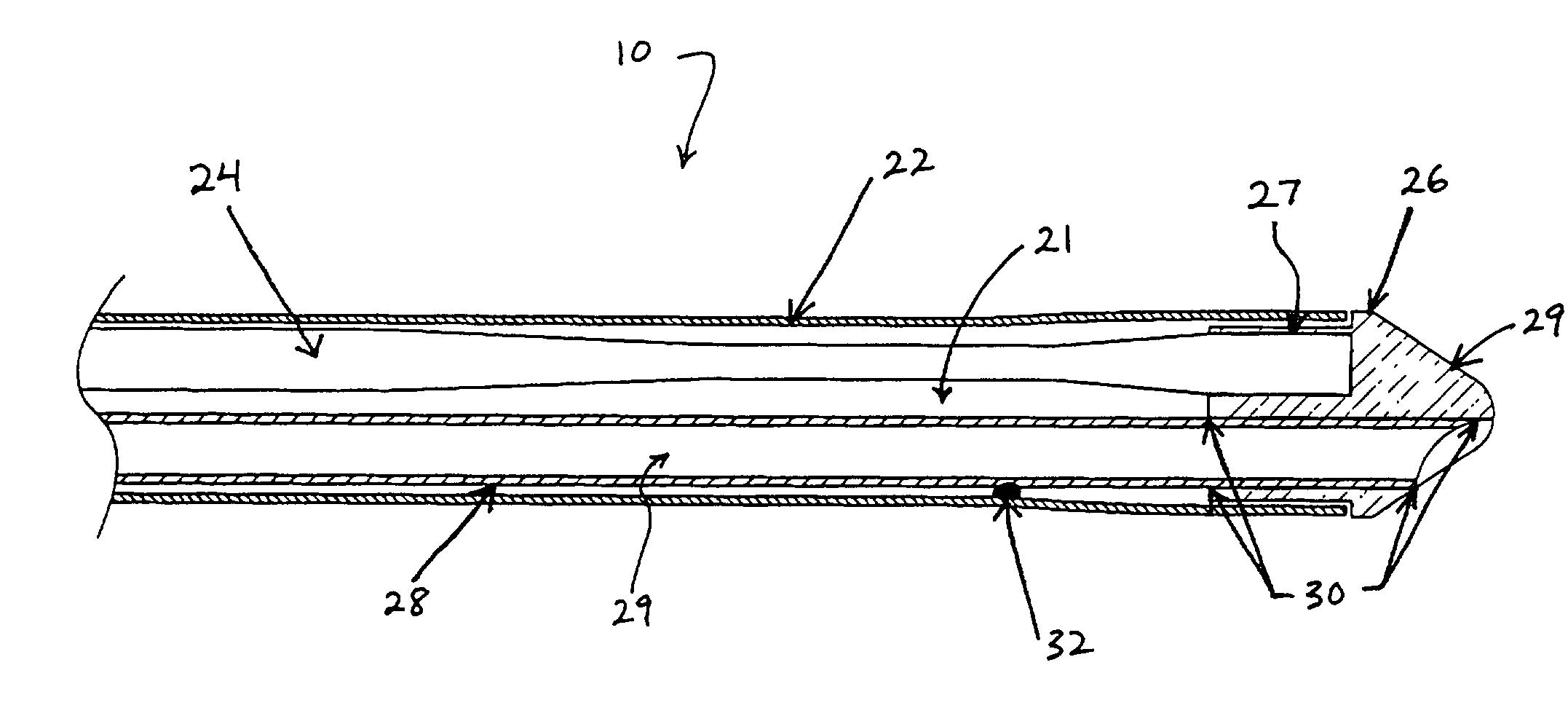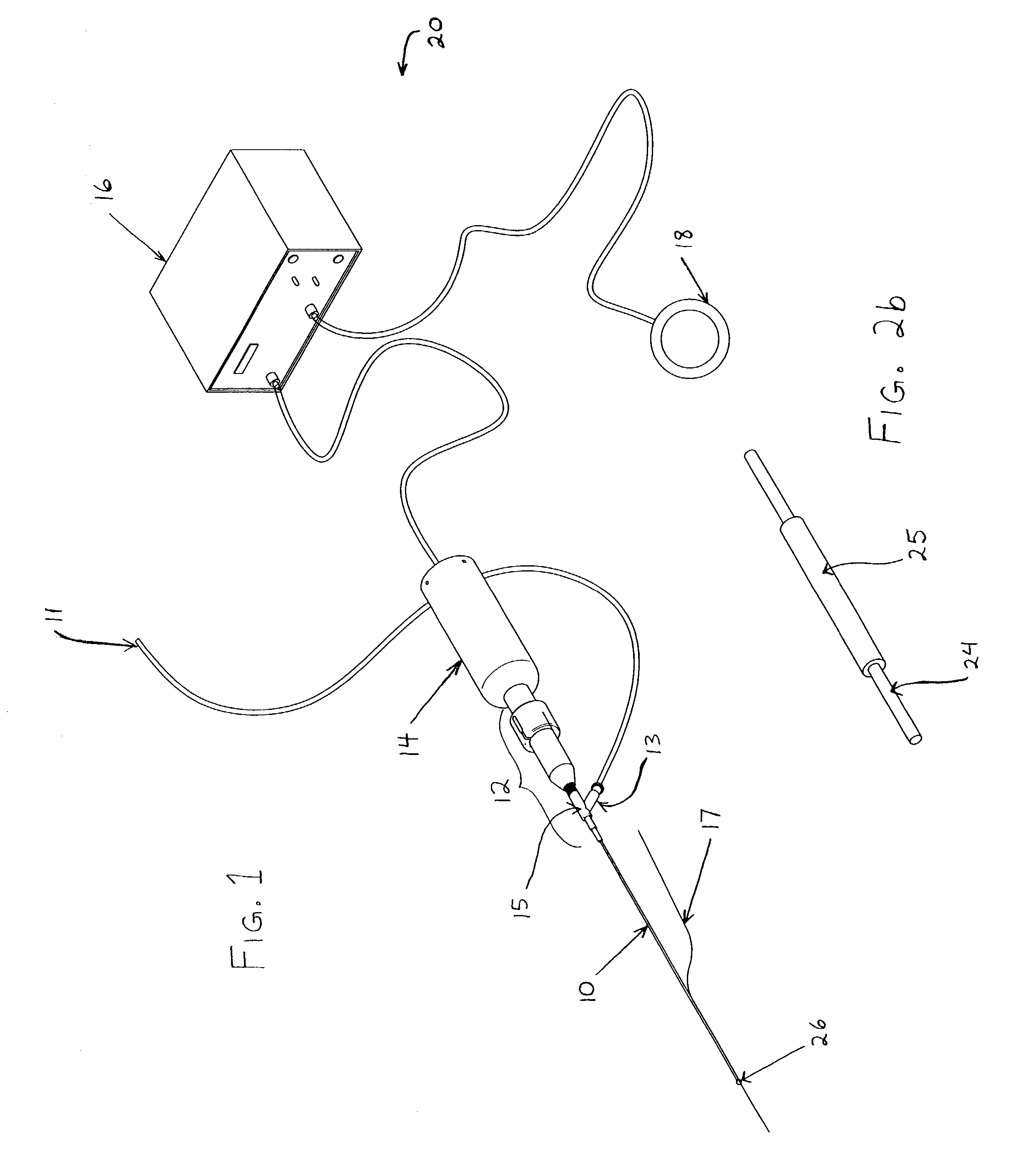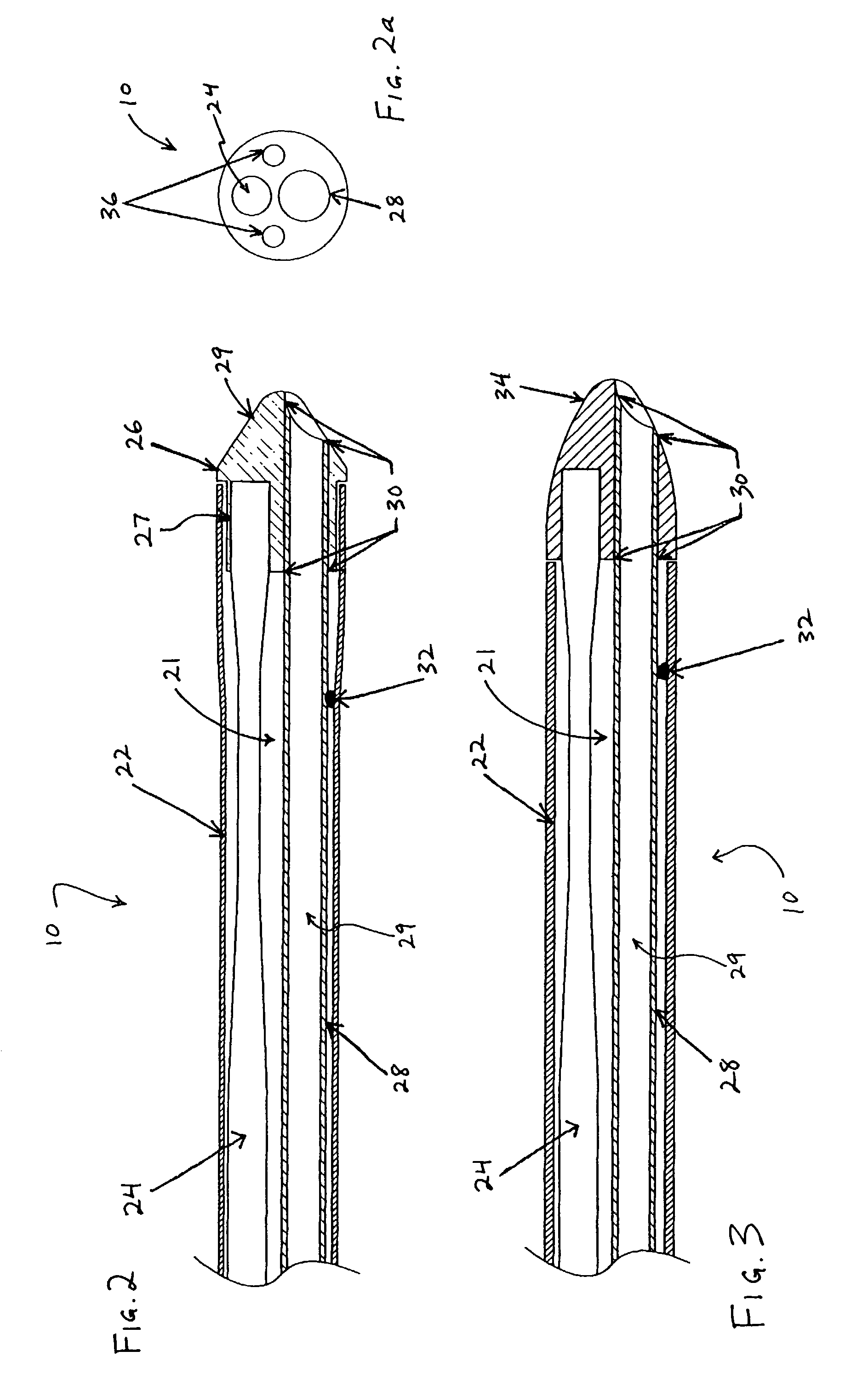Ultrasound catheter for disrupting blood vessel obstructions
a technology of ultrasound catheter and blood vessel, applied in the field of medical devices and methods, can solve the problems of affecting the treatment effect of patients, affecting the treatment effect, and the ultrasound transmission member, etc., to achieve the effect of enhancing the disruption of blood vessel obstruction
- Summary
- Abstract
- Description
- Claims
- Application Information
AI Technical Summary
Benefits of technology
Problems solved by technology
Method used
Image
Examples
Embodiment Construction
[0036]Ultrasound catheter devices and methods of the present invention generally provide for ablation and disruption of intravascular occlusions, including calcified occlusions. An ultrasound energy transmission member, such as a wire, typically transmits energy from an ultrasound transducer to a distal head of the catheter. The transmitted energy causes the distal head to vibrate, and such vibrational energy may be used to ablate vascular occlusions. Typically, the distal head of the ultrasound catheter is not directly affixed to the catheter body, which allows the distal head to move freely (or “float”), relative to the distal end of the catheter body. This freedom of movement generally provides increased energy transmission efficiencies, with reduced stress on the ultrasound transmission wire and, therefore, less wear and tear and premature breakage of the wire. Additionally, an unaffixed distal head may provide greater ablative capabilities, so that calcified occlusions may be d...
PUM
 Login to View More
Login to View More Abstract
Description
Claims
Application Information
 Login to View More
Login to View More - R&D
- Intellectual Property
- Life Sciences
- Materials
- Tech Scout
- Unparalleled Data Quality
- Higher Quality Content
- 60% Fewer Hallucinations
Browse by: Latest US Patents, China's latest patents, Technical Efficacy Thesaurus, Application Domain, Technology Topic, Popular Technical Reports.
© 2025 PatSnap. All rights reserved.Legal|Privacy policy|Modern Slavery Act Transparency Statement|Sitemap|About US| Contact US: help@patsnap.com



